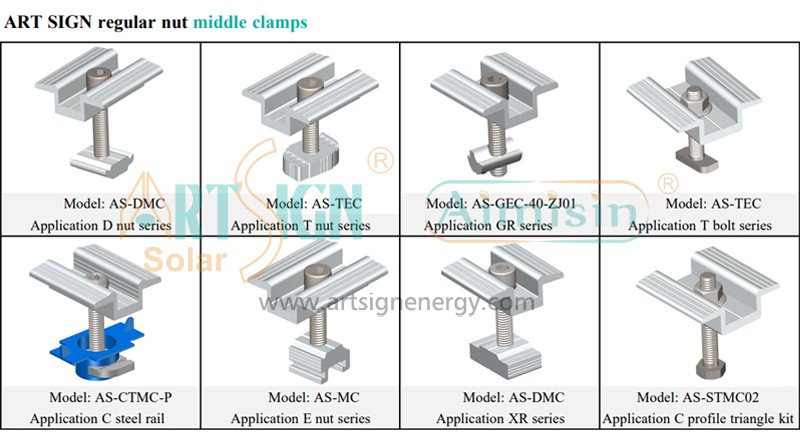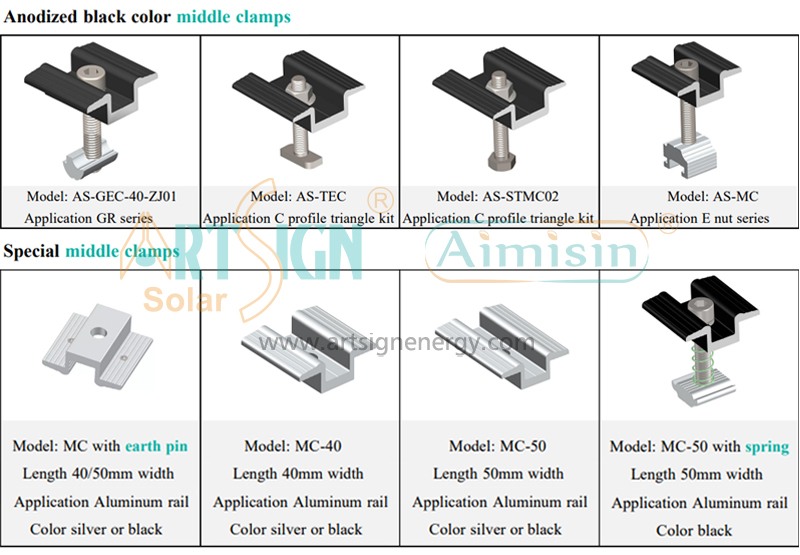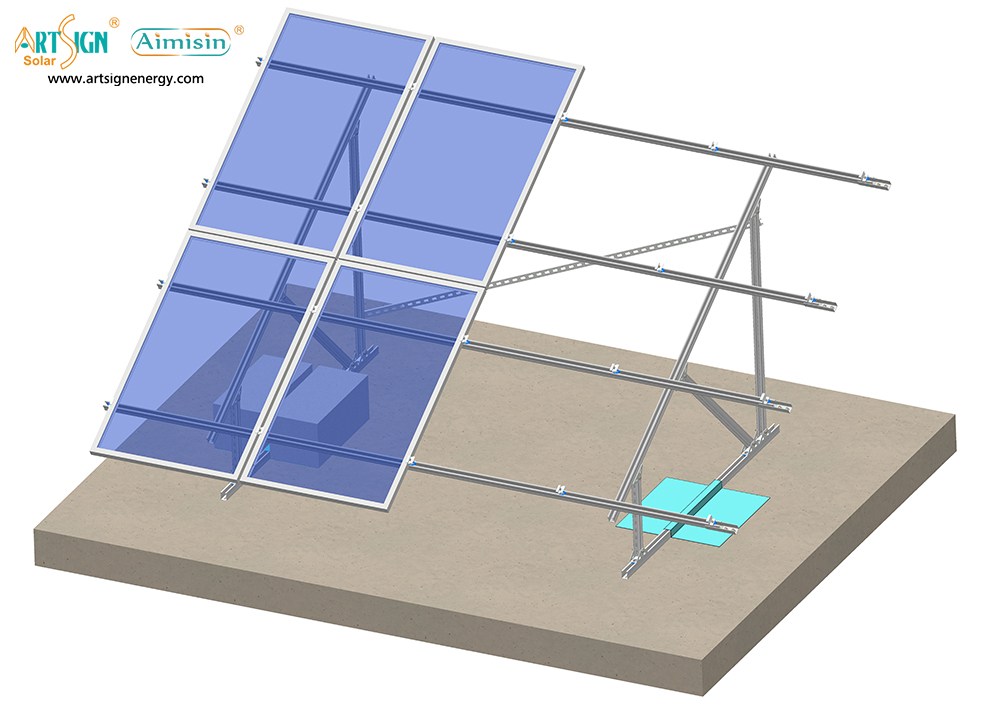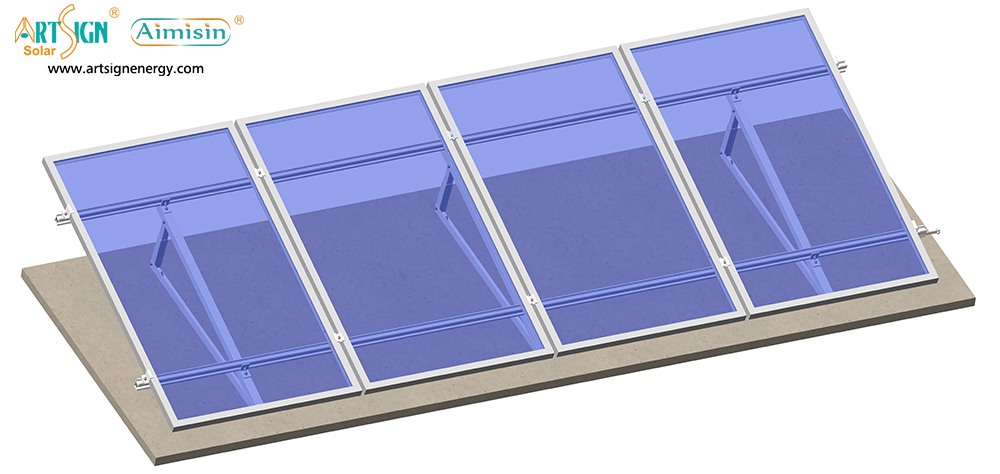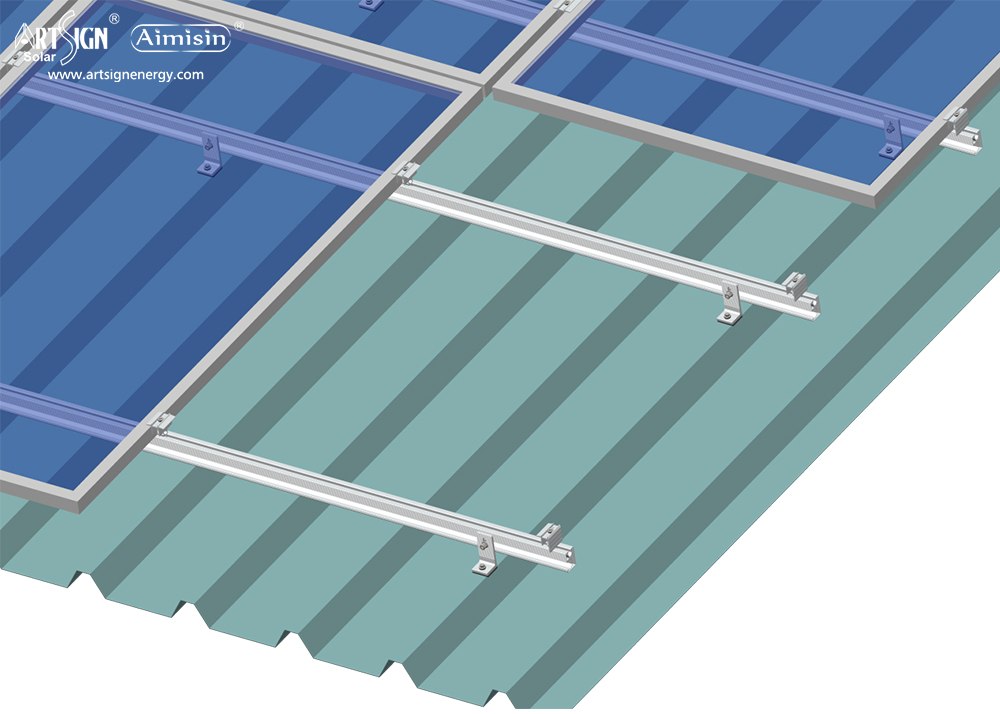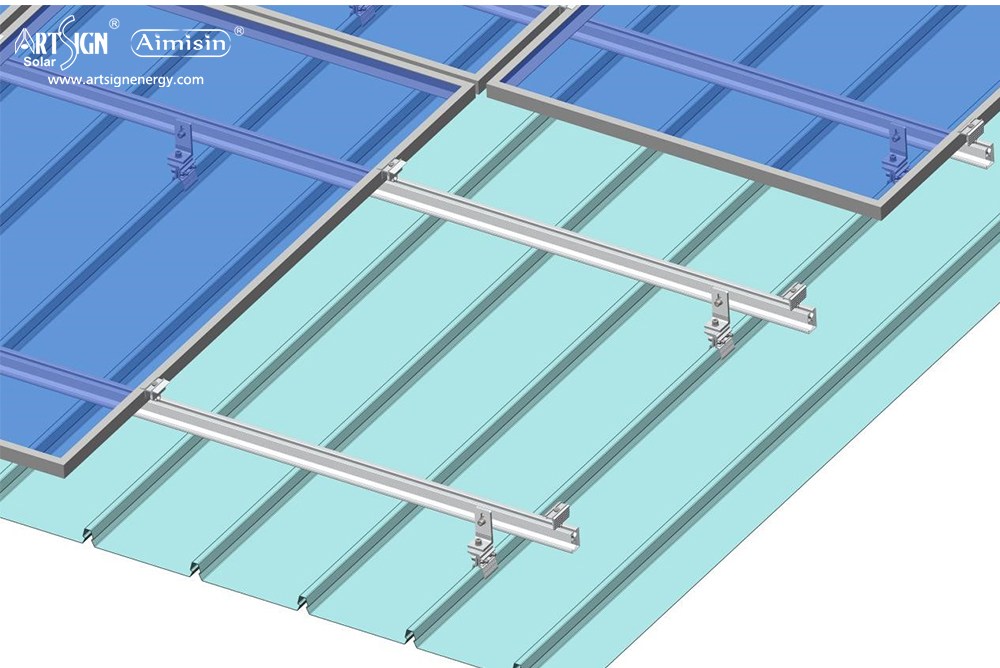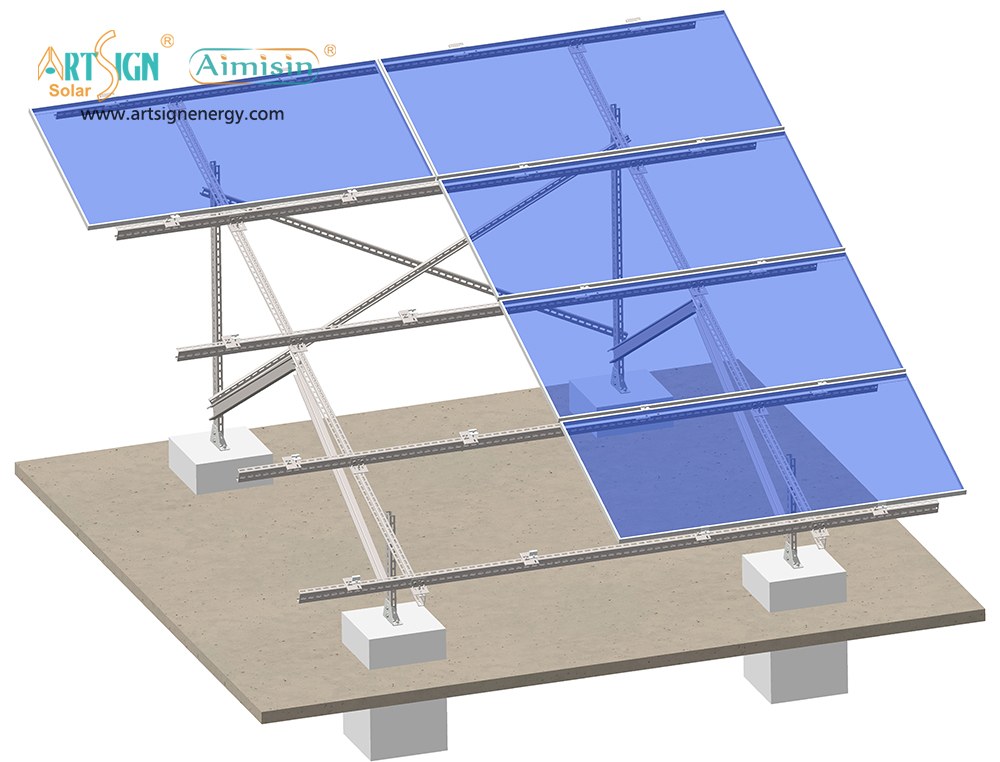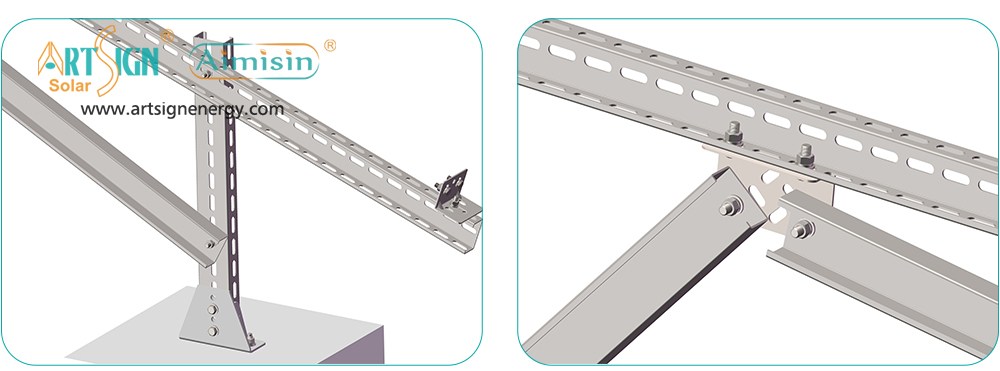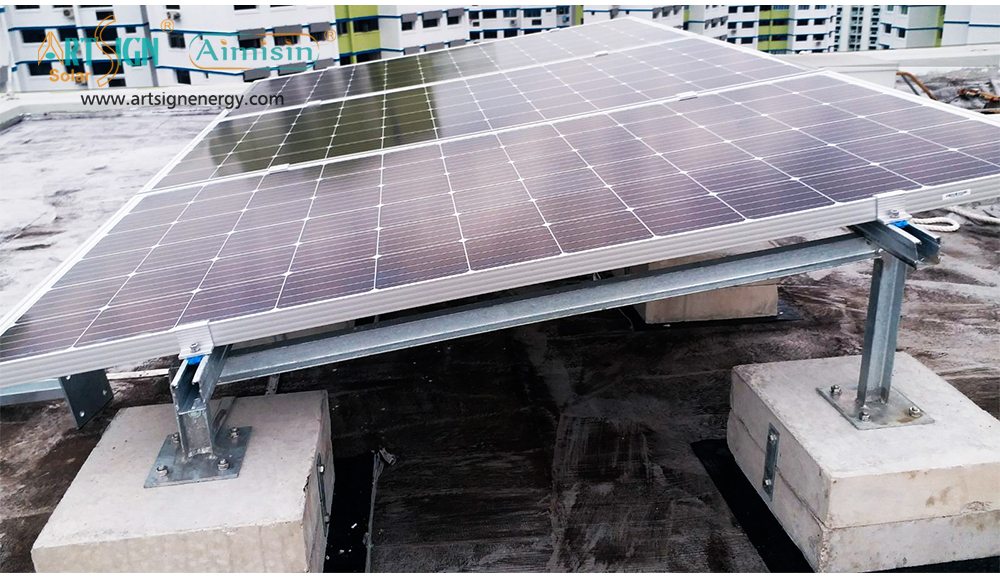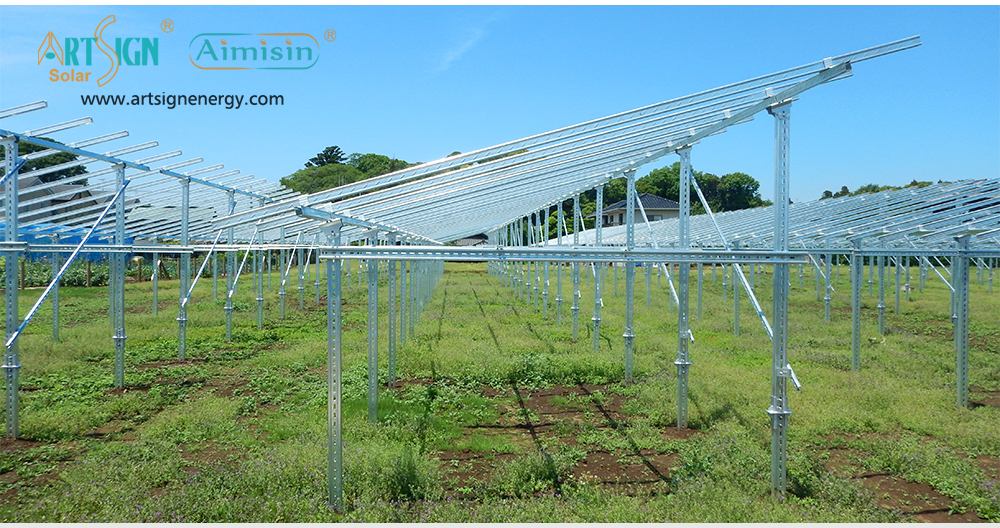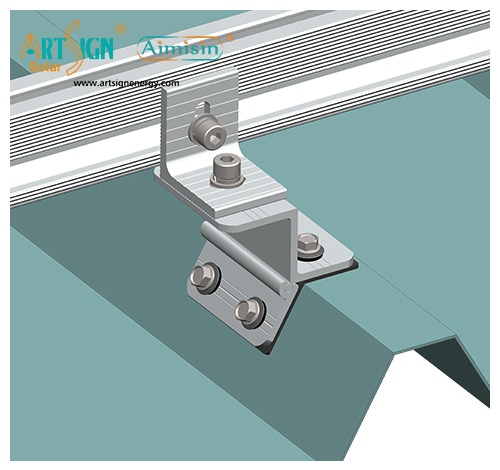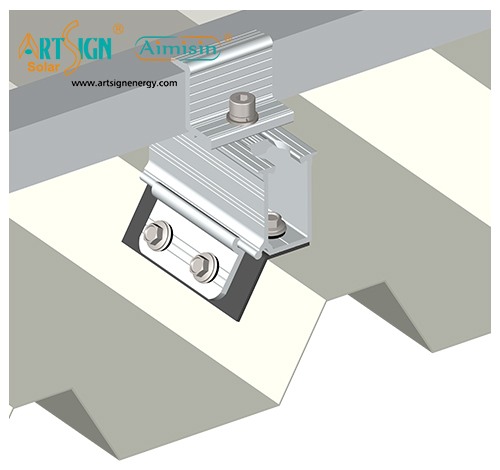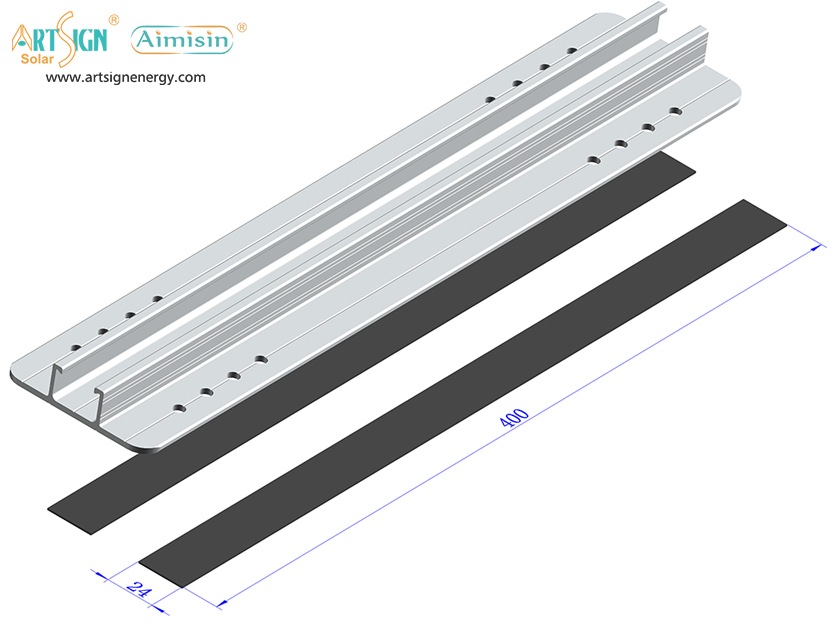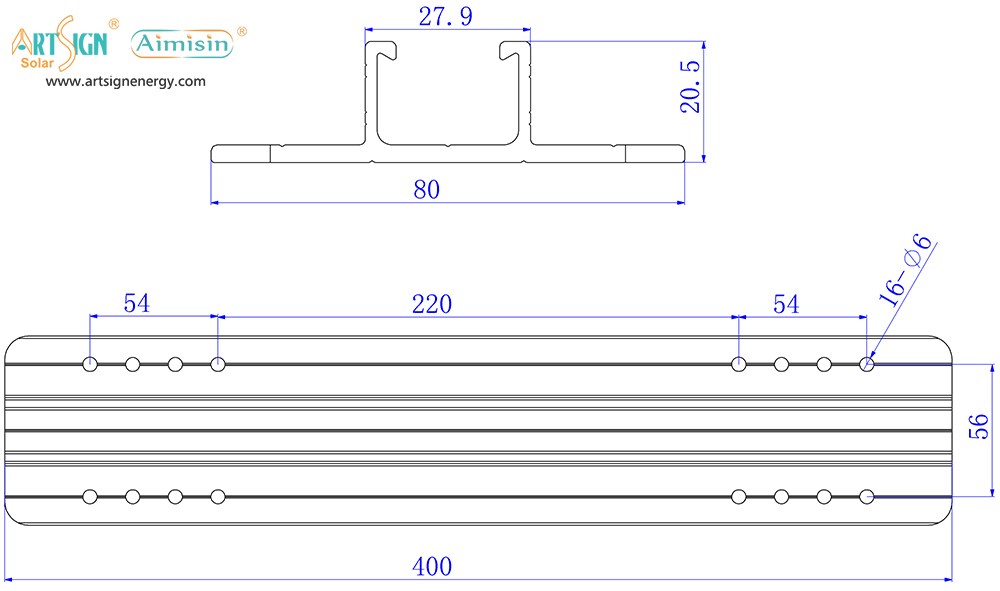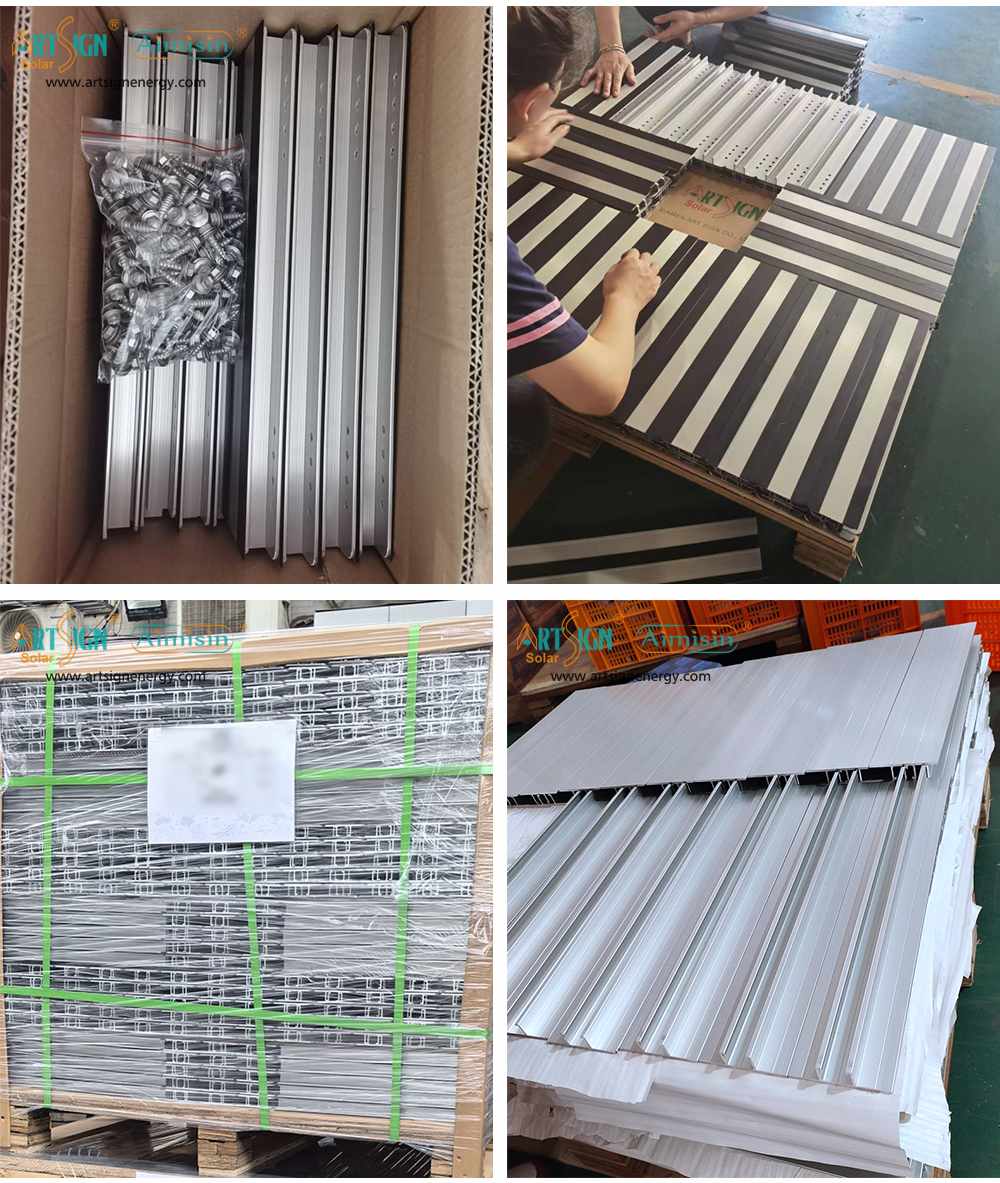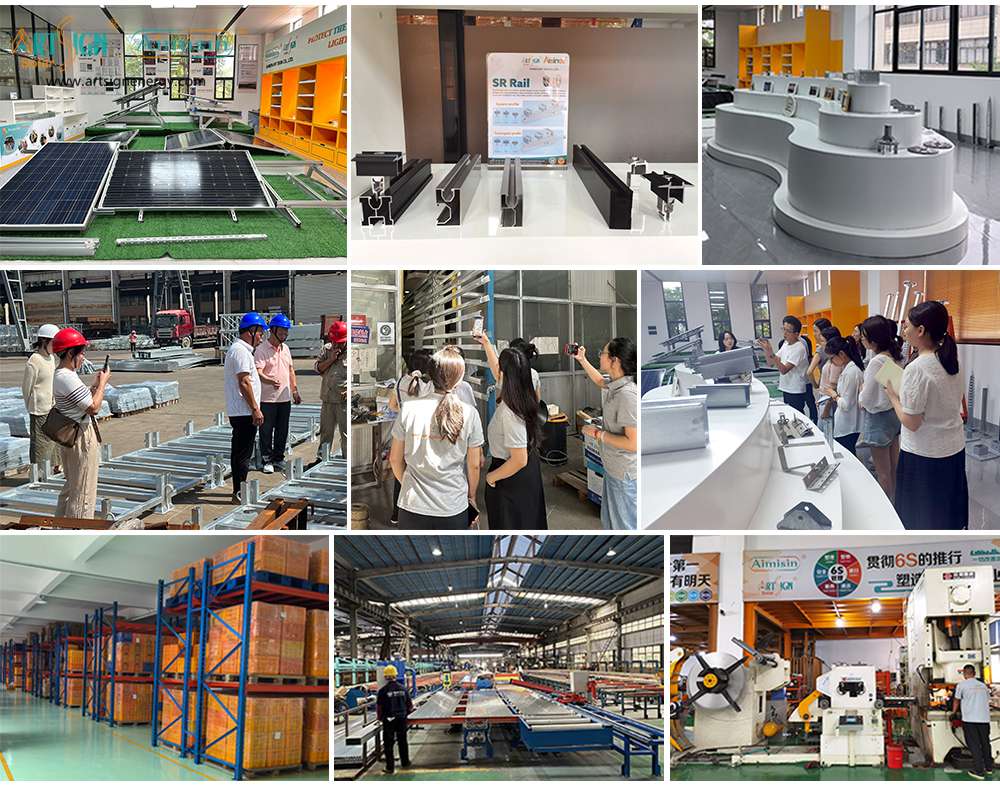Are you trying to find a solar ground mounting system structure for PV installation about steel material? Art Sign is a reputable producer of solar mounting system. We provide solar ground mounts and use latest process which called Chanel steel Zinc-Aluminum-Magnesium coated steel ZM steel(hereinafter referred to as ZM steel) ground mounting system for solar panels.
Since solar C type ZM coated steel ground mounting system issued, Art Sign has received positive feedback from many parties. Using this style ground mounting system, there are three types of base show as below:
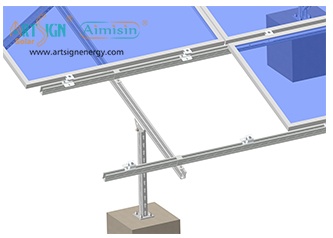 |
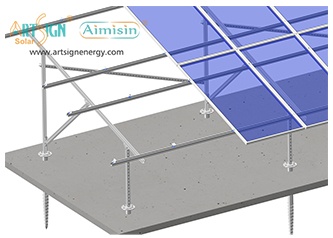 |
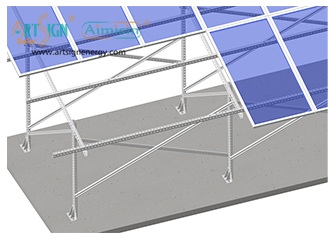 |
|
concrete pad |
pile driven |
ramming pile |
Features:
①The structure installation is flexible which is apply to landscape and portrait panel;
②Suitable for large footing span with stronger strength.
③No need welding and punching.
Strength:
①The structure is designed according to the wind load or snow load request.
②With good performance of structure strength, stability and anti-corrosion, compatible with varied solar modules.
In the C type ZM coated steel ground mounting systems, there are three ways to fix the solar panels.
1)The screws on the back of the solar panel lock directly;
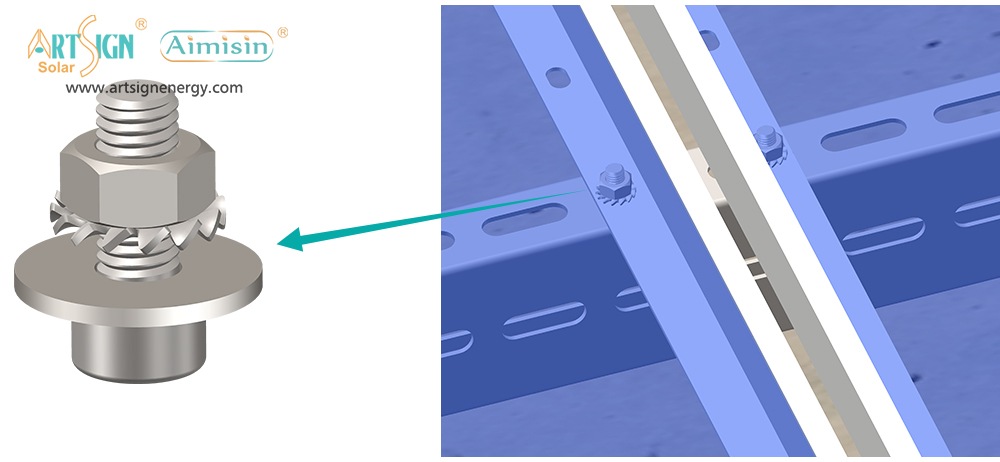
2)Clamps lock the solar panels;
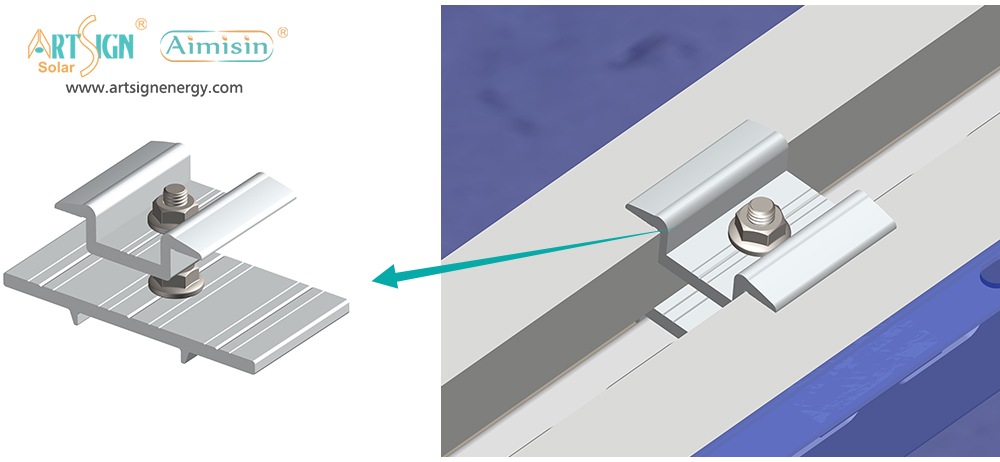
3) Use an extension sheet and clamps to lock the solar panels.
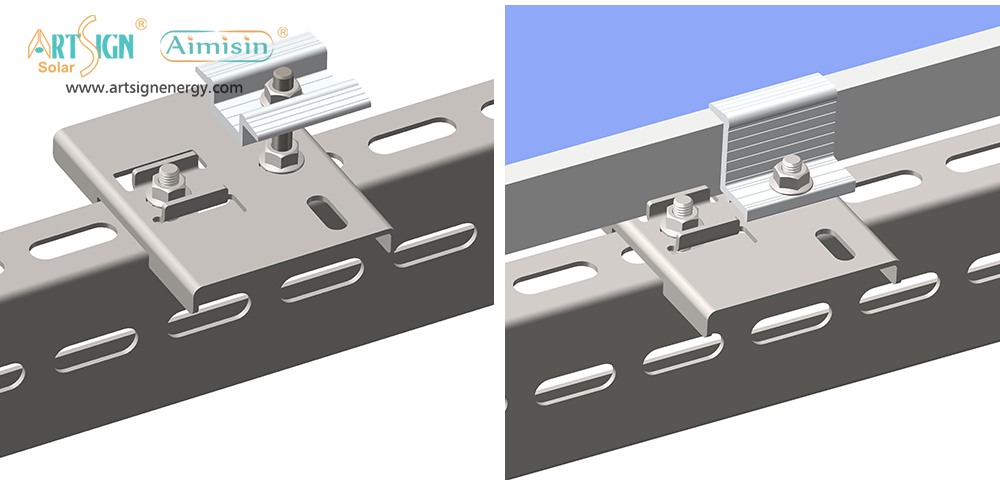
Portrait and landscape solar panels also have different effects on the track connection of the entire solar mounting bracket system.


 |
 |
|
|
|
Regarding the C type ZM coated steel solar mounting system, it is not only suitable for ground mounting system but also it is suitable for flat roof mounting system.
For any inquires for solar panels mounting system, please feel free to contact us.
E-mail: sales@artsign.net.cn,
Whatsapp / Wechat / Skype:+86-18030235875, thanks.
